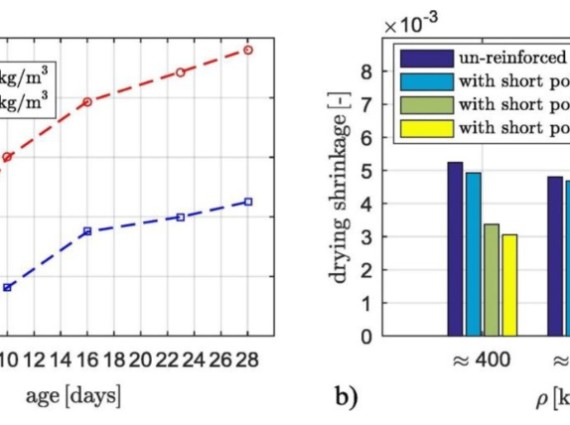
Abstract/Photo copyright of: Amran, M., Fediuk, R., Vatin, N., Huei Lee, Y., Murali, G., Ozbakkaloglu, T., Klyuev, S., Alabduljabber, H.: Fibre-reinforced foamed concretes: A review. Materials. 13(19), 2020, 4323.
Foamed concrete (FC) is a high-quality building material with densities from 300 to 1850 kg/m3, which can have potential use in civil engineering, both as insulation from heat and sound, and for load-bearing structures. However, due to the nature of the cement material and its high porosity, FC is very weak in withstanding tensile loads; therefore, it often cracks in a plastic state, during shrinkage while drying, and also in a solid state. This paper is the first comprehensive review of the use of man-made and natural fibres to produce fibre-reinforced foamed concrete (FRFC). For this purpose, various foaming agents, fibres and other components that can serve as a basis for FRFC are reviewed and discussed in detail. Several factors have been found to affect the mechanical prop-erties of FRFC, namely: fresh and hardened densities, particle size distribution, percent-age of pozzolanic material used and volume of chemical foam agent. It was found that the rheological properties of the FRFC mix are influenced by the properties of both fibres and foam; therefore, it is necessary to apply an additional dosage of a foam agent to enhance the adhesion and cohesion between the foam agent and the cementitious filler in comparison with materials without fibres. Various types of fibres allow the reduction of by autogenous shrinkage a factor of 1.2–1.8 and drying shrinkage by a factor of 1.3–1.8. Incorporation of fibres leads to only a slight increase in the compressive strength of foamed concrete; however, it can significantly improve the flexural strength (up to 4 times), tensile strength (up to 3 times) and impact strength (up to 6 times). At the same time, the addition of fibres leads to practically no change in the heat and sound insula-tion characteristics of foamed concrete, and this is basically depended on the type of fi-bres used such as Nylon and aramid fibres. Thus, FRFC having the presented set of prop-erties has applications in various areas of construction, both in the construction of load-bearing and enclosing structures.